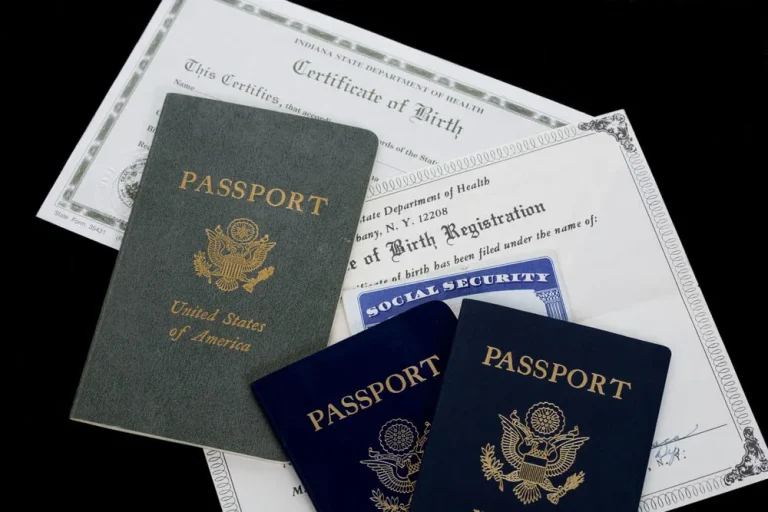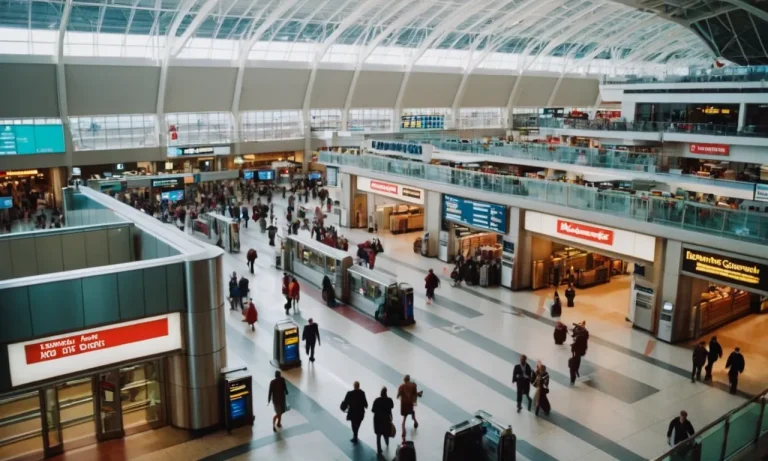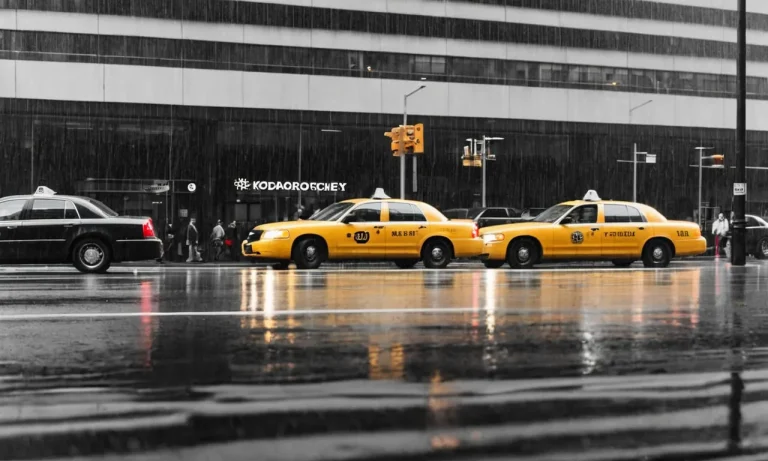Traveling by air can be unpredictable due to factors like weather that are out of our control. If you’ve ever wondered how rain may impact your upcoming flight, you’re not alone.
Here’s a quick answer: Rain can definitely cause flight delays and cancellations under certain conditions, but not all rain leads to major disruptions.
In this comprehensive guide, we’ll cover everything you need to know about how rain affects flight schedules.
You’ll learn what types of rain are most likely to delay flights, how airlines prepare for and respond to rainy conditions and tips for travelers to minimize hassle from potential rain disruptions.
How Rain Impacts Flight Schedules
When it comes to rain and its impact on flight schedules, there are a few key factors to consider.
Light to moderate rain typically has minimal effect on flights, while heavy rainfall can reduce visibility and create slippery runways.
Thunderstorms pose even bigger challenges for air travel.
Light to Moderate Rain Usually Has Minimal Impact
In general, light to moderate rain does not significantly disrupt flight schedules.
Most aircraft are designed to handle rain without issue, and pilots are trained to navigate through rain showers safely.
While there might be some delays due to the need for extra caution during takeoff and landing, these delays are usually minimal and do not cause major disruptions to flight schedules.
Heavy Rainfall Can Reduce Visibility and Slicken Runways
Heavy rainfall, on the other hand, can cause more significant disruptions to flight schedules. When rain is heavy, it can reduce visibility both on the ground and in the air, making it difficult for pilots to safely navigate and land.
Additionally, heavy rain can make runways slick, which can pose challenges during takeoff and landing. In such cases, flights may be delayed or even canceled to ensure the safety of passengers and crew.
This is to prevent hydroplaning, which can occur when the tires of an aircraft lose contact with the runway surface due to a layer of water.
Thunderstorms Present Bigger Problems for Air Travel
Thunderstorms are one of the most significant weather events that can impact flight schedules. These storms bring not only heavy rainfall but also strong winds, lightning, and turbulence.
In order to ensure the safety of passengers and crew, airlines and airports often choose to delay or cancel flights when thunderstorms are in the area.
Thunderstorms can create hazardous conditions both on the ground and in the air.
The strong winds associated with these storms can make it difficult for aircraft to take off and land safely.
Lightning can also pose a risk to aircraft, potentially interfering with navigation and communication systems.
Additionally, the turbulence caused by thunderstorms can be uncomfortable for passengers and may require pilots to alter their flight paths to avoid severe weather.
Airline Policies and Protocols for Rainy Weather
When it comes to rainy weather, airlines follow specific policies and protocols to ensure the safety and comfort of their passengers.
Understanding these procedures can help travelers better navigate potential flight delays or cancellations caused by rain.
Cancellations Are a Last Resort
Airlines strive to avoid canceling flights due to rain whenever possible. Cancellations are typically a last resort and are only made when the weather conditions pose a significant risk to the safety of the aircraft or passengers.
Before making the decision to cancel, airlines closely monitor weather forecasts and consult with meteorologists to assess the severity of the rain and its potential impact on flight operations.
In the event of a flight cancellation, airlines have policies in place to assist affected passengers. These may include offering alternative flights, rebooking options, or providing accommodations and meals if necessary.
It’s important to check with the airline for specific details on their cancellation policies and the support they offer during rainy weather.
Airports Have Detailed Rain Preparedness Plans
Airports play a crucial role in managing flights during rainy weather. They have detailed rain preparedness plans in place to minimize disruptions and ensure the smooth operation of flights.
These plans involve various measures, such as regular runway inspections to assess the condition of the surface and drainage systems, ensuring adequate staffing levels to handle increased passenger volumes, and coordinating with airlines and air traffic control to manage flight schedules effectively.
Furthermore, airports may have specialized equipment, such as deicing trucks and anti-skid treatments for runways, to maintain safe operating conditions during rain.
These measures help mitigate potential risks associated with wet surfaces and ensure that flights can continue with minimal delays or disruptions.
Pilots and Crews Are Highly Trained for Adverse Weather
Pilots and flight crews undergo extensive training to handle adverse weather conditions, including rain. They are well-versed in the procedures and techniques necessary to safely operate an aircraft in inclement weather.
This training includes understanding how to navigate through rain showers, assessing the impact of rain on visibility and aircraft performance, and making informed decisions regarding flight operations.
Additionally, pilots receive regular updates on weather conditions throughout their flights, allowing them to adjust their routes or altitude if necessary to avoid areas of heavy rain or turbulence.
Their primary concern is always the safety of the passengers, and they are equipped with the knowledge and skills to make the best decisions in the face of rainy weather.
It’s worth noting that while rain may cause some delays or disruptions, airlines and their personnel are committed to ensuring passenger safety and minimizing the impact of adverse weather conditions on flight operations.
Keeping informed about airline policies and being prepared for possible changes in travel plans can help make the experience smoother and less stressful for travelers.

Tips for Travelers Dealing with Rain Delays
Check Your Flight Status Frequently Leading Up to Travel
When rain is in the forecast, it’s important to stay informed about any potential flight delays or cancellations.
Airlines typically update their flight status information regularly, so make it a habit to check your flight status frequently leading up to your travel date.
This will give you a better idea of whether your flight will be affected by the rain or not. You can easily check your flight status online through the airline’s website or mobile app.
Additionally, signing up for flight notifications can also help you stay updated on any changes to your flight schedule.
Pro Tip: If you notice that your flight has been delayed or canceled due to rain, it’s a good idea to contact your airline’s customer service for further assistance.
They may be able to provide you with alternative flight options or help you make arrangements for accommodations if necessary.
Arrive Early to the Airport
Dealing with rain delays can be stressful, but arriving early to the airport can help alleviate some of that stress. Weather conditions like rain can cause congestion on the roads, making it more difficult to reach the airport on time.
By giving yourself extra time, you can account for any potential delays caused by the rain.
Arriving early also allows you to complete the check-in and security processes at a more relaxed pace, ensuring that you don’t miss your flight even if there are weather-related delays.
Pro Tip: Use real-time traffic apps or websites to check for any traffic congestion or accidents along your route to the airport.
This will help you plan your journey accordingly and avoid any potential delays caused by rain or other weather conditions.
Pack Essential Items in Your Carry-On
When rain delays a flight, it’s always a good idea to be prepared for unexpected situations. Packing essential items in your carry-on bag can make a big difference during a delay.
Include items such as a change of clothes, toiletries, medications, snacks, a book or electronic device for entertainment, and any necessary travel documents.
This way, if you find yourself stuck at the airport due to a rain delay, you’ll have everything you need to stay comfortable and entertained.
Pro Tip: Don’t forget to include a portable charger or extra batteries for your electronic devices in case you need to recharge during a long delay.
Be Patient and Stay Calm
Dealing with a rain delay can be frustrating, but it’s important to remember that the airline is doing its best to ensure your safety.
Weather conditions, including rain, can affect various aspects of air travel, such as visibility, runway conditions, and aircraft maintenance.
While it’s natural to feel anxious or upset about a delay, try to remain patient and stay calm.
Keeping a positive attitude and being understanding will not only make the experience more pleasant for yourself but also for the airline staff who are working hard to get you to your destination.
Pro Tip: Use the extra time during the delay to relax, catch up on work, or explore the airport amenities. Many airports have shops, restaurants, and even spa services that can help pass the time more comfortably.
Your Rights as a Passenger for Weather Delays
When it comes to weather delays, it’s important to know your rights as a passenger.
While airlines are not obligated to provide compensation for delays caused by rain or other weather conditions, they are required to take certain measures to ensure your safety and comfort.
Airlines Aren’t Obligated to Provide Compensation
Unfortunately, airlines are not legally required to offer compensation for flight delays caused by rain or other weather-related issues.
This is because weather conditions are considered to be outside the control of the airline.
However, most airlines will still try to accommodate passengers by offering alternative flights or providing vouchers for food and accommodation, especially for longer delays.
It’s important to note that compensation policies may vary between airlines, so it’s always a good idea to familiarize yourself with the specific terms and conditions of your ticket.
Exceptions for Extended Tarmac Delays
While airlines may not be obligated to provide compensation for weather delays, there are regulations in place to protect passengers in the event of extended tarmac delays.
In the United States, for example, the Department of Transportation mandates that airlines must provide passengers with the option to deplane after three hours on the tarmac for domestic flights and four hours for international flights.
If you find yourself in a situation where you’re stuck on the tarmac for an extended period due to weather conditions, it’s important to know your rights.
You have the right to be informed about the delay, the right to request updates on the status of the flight, and the right to request food, water, and restroom facilities.
Policies on Rebooking for Canceled Flights
In the event of a flight cancellation due to weather conditions, airlines generally have policies in place to assist passengers with rebooking.
These policies may vary between airlines, but most will offer options such as rebooking on the next available flight, transferring to another airline, or providing a refund for the canceled flight.
It’s important to stay informed during these situations, as airlines may provide updates and instructions through their websites, social media channels, or airport staff.
Checking the airline’s website or contacting their customer service hotline can help you understand your options and make alternative arrangements.
Remember, weather delays are a common occurrence in air travel, and while they can be frustrating, it’s important to remain patient and understanding.
Airlines are doing their best to ensure your safety and get you to your destination as quickly as possible.
Conclusion
To summarize, light to moderate rain often has minimal impact on flight schedules, while heavy rains, thunderstorms, and other severe weather can lead to delayed and canceled flights.
Airlines work hard to get passengers to their destinations as quickly and safely as possible, even in inclement weather.
Travelers should monitor conditions, arrive early, and pack essentials in carry-ons to smoothly handle potential rain disruptions.
While weather delays can certainly be frustrating, being informed and understanding your rights as a passenger can help take some of the stress out of traveling during rainy periods.






